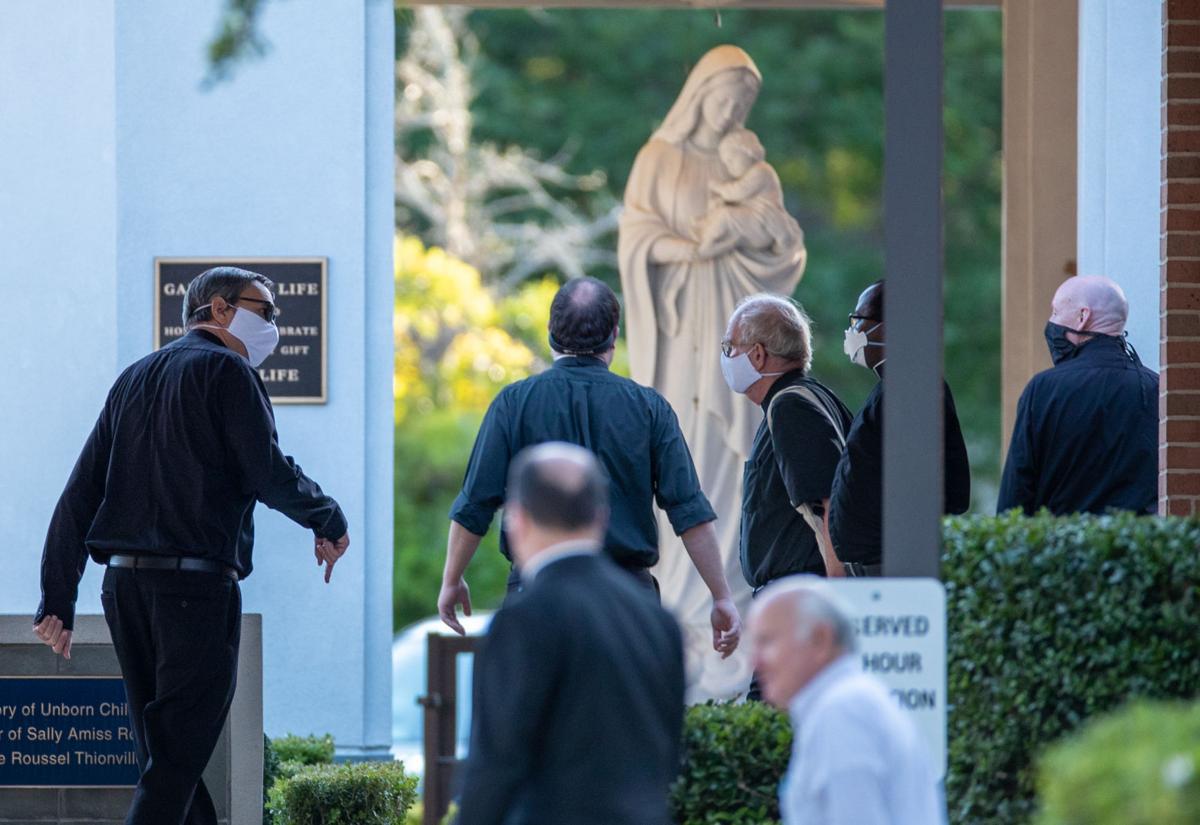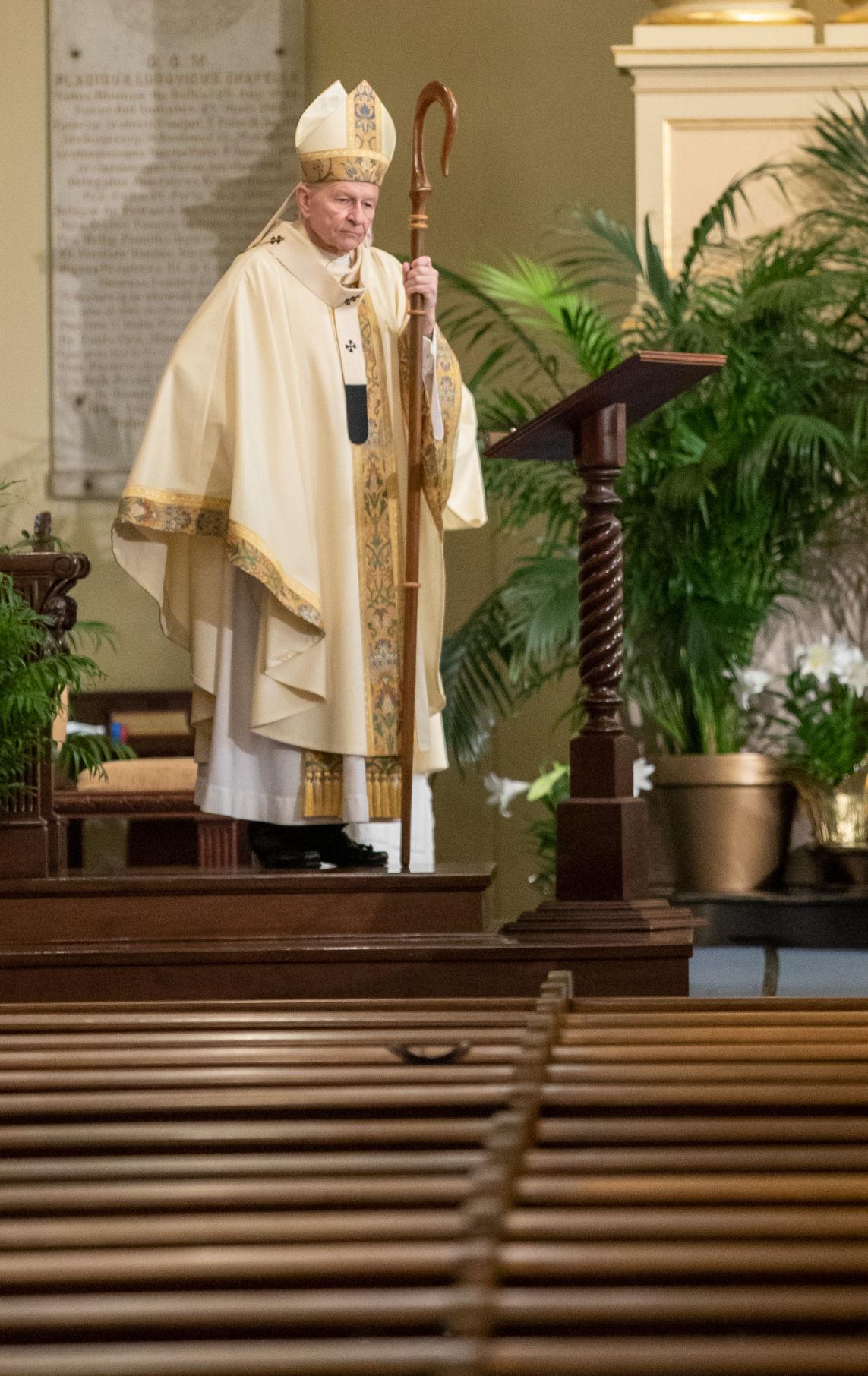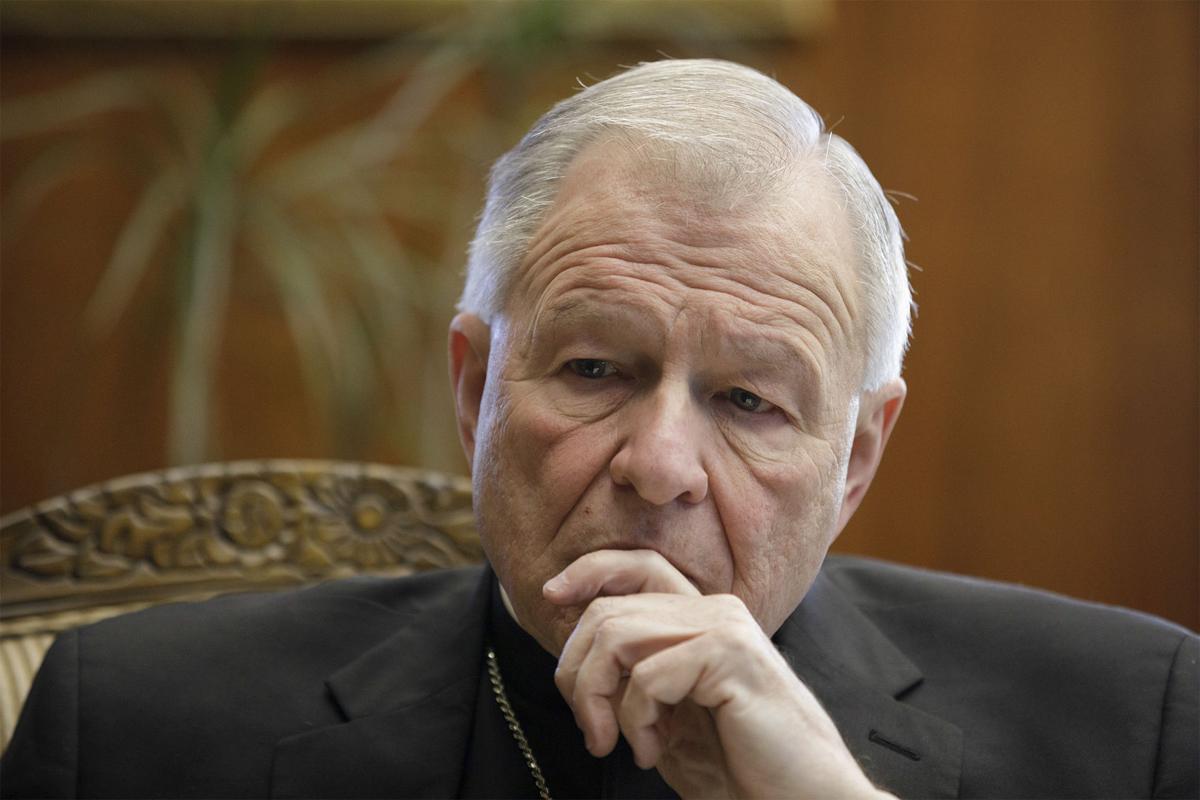|
For clergy abuse cases, Archdiocese of New Orleans bankruptcy alters landscape for settlements
By John Simerman
For the Archdiocese of New Orleans, shadow-boxing the sins of its past became a fight too risky to stomach. Now, in the wake of filing for Chapter 11 bankruptcy on Friday, the archdiocese and its creditors — mostly sexual abuse claimants — will begin to negotiate the price for a move bound to have lasting repercussions for the archdiocese and its accusers, for better or worse. The outcome will hinge on several factors, as clergy abuse claims move en masse from the drag-it-out halls of state court, to a single federal bankruptcy proceeding with no jury and a swifter pace, say lawyers and advocates familiar with the 26 previous bankruptcy filings by U.S. dioceses since 2004. Among those factors, they say, is how the archdiocese and a committee of creditors will handle a flurry of new claims of sexual abuse expected to roll in once the bankruptcy judge, Meredith Grabill, sets a hard “bar” date for anyone to file a claim from before the May Day filing. How the two sides approach thorny “non-monetary” issues such as the release of diocesan records on clergy abuse will also factor in, legal observers said. Grabill’s assessment of church assets and insurance coverage will play a big role in negotiations over a reorganization plan and payout. Archbishop Gregory Aymond described the Chapter 11 filing as “for the good of the church, the victims and survivors,” while insisting it wouldn’t affect operations for an archdiocese that shriveled in the wake of Hurricane Katrina, shuttering numerous parishes. Indeed, those familiar with the outcomes of previous bankruptcy filings by U.S. dioceses say the payouts that resulted have, on their own, caused little noticeable downshift in church life. Penn State law professor Marie Reilly, who is tracking bankruptcy filings by U.S. dioceses, said none of them have been forced by a federal judge, for instance, to part with church property. In some cases, though, pressure from creditors to sell properties has led church-affiliated groups to raise money for their purchase, adding to the settlement pot. Parish churches, schools, housing agencies and other ministries are incorporated separately from the archdiocese. Aymond and Patrick Carr, the vicar general of finance for the archdiocese, said they didn’t anticipate those operations and funds to be affected. But those fights remain ahead. Reilly, who counts herself among the Catholic faithful, argued that bankruptcy for U.S. dioceses facing a never-ending stream of clergy abuse lawsuits is far from the “coward’s hideout” portrayed by some advocates. “This is the pathway to put it all behind,” she argued. “This is the way. This is the only way that you can leave the church for your kids in a way that they don’t have this problem lingering out there. It’s a way, with all that information at hand, to take stock of what the diocese is capable of paying, put it in the pot and move on.” So far, it’s taken from less than a year to nearly five years, in the case of the Archdiocese of Milwaukee, to settle 18 diocesan bankruptcies that have reached that point, according to the Penn State data. Milwaukee’s was an exceptionally combative bankruptcy case, however; now-Cardinal Timothy Dolan of New York, then the Milwaukee archbishop, was accused of trying to shield $55 million in a cemetery trust fund. Only three of the 18 bankruptcy cases that have concluded with settlements by Catholic dioceses and religious orders have run longer than three years. The stiffest payouts, in San Diego and St. Paul/Minneapolis, hovered around $200 million. Most came in far lower. Despite a rising tide of dioceses seeking bankruptcy protection, Reilly and other observers say they were caught off guard by the Chapter 11 filing by the New Orleans archdiocese, considering its significant assets and relatively few active clergy abuse lawsuits. Aymond acknowledged that the archdiocese had been considering bankruptcy for months. Along with the cost of fighting a steady stream of new abuse lawsuits, he cited millions of dollars in annual operating losses over years. The drain on church giving from the COVID-19 pandemic tipped the balance, he suggested. But unlike several other dioceses that have taken the plunge into bankruptcy, the New Orleans archdiocese hasn’t had to deal with laws that in other states gave survivors a fresh window of time to seek damages. The first U.S. diocese to seek bankruptcy, in Portland, Oregon in 2004, did so on the eve of a high-stakes civil trial. “We’re not looking at a situation where there are an enormous number of lawsuits that are being managed, at least to our knowledge. This bankruptcy might be an anticipatory bankruptcy,” said Terry McKiernan, founder of bishopaccountability.org, which tracks clergy abuse nationally. “It almost seems like the archdiocese has decided to consolidate all the pain.” Jeff Anderson, an attorney who has represented clergy-abuse claimants in bankruptcy filings across the country, said he “didn’t see that coming” in New Orleans. “What this really signals is what is now coming across this country. There’s going to be a wave of preemptive reorganizations,” he added. The advantages to the dioceses are not just monetary, Anderson argued. “They’re not required to come clean with all the histories, and the cover-up of all those histories, of all those offenders," he said. "And they’re not required to pay anything close to full value on those claims. They all get suppressed or diminished.” Survivors seeking damages from the archdiocese must now recalibrate, said Reilly, the Penn State professor. “They’re not going to get their day in court the same way,” she said. “You change from that winner-take-all payment protocol, to a kind of sharing situation.” In one sense it’s easier. Clergy abuse survivors will assume a place on a matrix, according to a physical description of their alleged abuse and other factors, to determine their share of a settlement, McKiernan said. That approach, though, can sting for some survivors. “The effect of the abuse is not necessarily commensurate with the physical description,” he said. “There are survivors whose lives are ruined by one level of abuse. That plain, physical description of the abuse is not a description of its impact.” In every other diocesan bankruptcy, creditors have pushed with varying levels of success to pry church records on clergy abuse into the public realm as part of the negotiations. McKiernan, who said he suspects a “contagion factor” may lead some of the six other Louisiana dioceses to follow suit, said some revelations have come under pressure from bankruptcy judges, while other dioceses have conceded early on to making long-secret records public. Given how hard the New Orleans archdiocese has fought in court over the release of emails regarding public-relations help from the New Orleans Saints, McKiernan said it figures to be a hotly contested issue. “That indicates to me they don’t want transparency here,” he said. “I would predict there’s going to be a fight about documents in New Orleans as a result.” David Asbach, the acting U.S. trustee who will play a key role in the bankruptcy case, was an assistant trustee during the contentious Milwaukee archdiocese bankruptcy, which ended in 2015. However it shapes up, bankruptcy is a “huge advantage” for the archdiocese and its parishioners, though the cost may be steep, Reilly said. “You get final forgiveness of all claims that could have been asserted against you on that petition date,” she said. “You get a final level of forgiveness you cannot get even if you settle under state law.” That certainty following bankruptcy has spurred successful capital campaigns by dioceses who have made it through. The New Orleans diocese’s ability to borrow may be at the heart of the decision, Reilly said. For Catholic parishioners in New Orleans, she said, “it’s heartbreaking for what they’ve already lived through: Seeing the place they were baptized, and their parents were married, closed. Or told you were going to be worshiping 15 minutes away, or sent to a school in another neighborhood. They adapted, and now this.” Reilly described the dilemma for the faithful as having to “absorb the cost for actions that were made years ago,” without many good options. “It’s sort of like, ‘What does that have to do with me?’” she said. “And yet at the end of the day, it’s our church today. Any shareholder of a corporation ... you sell your shares and you’re gone. If you’re Catholic, you have one choice: Not to be a Catholic. That’s something most Catholics, no matter how crabby they get, are just not willing to do.” Contact: jsimerman@theadvocate.com
|
.
Any original material on these pages is copyright © BishopAccountability.org 2004. Reproduce freely with attribution.


